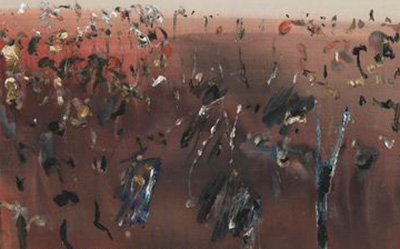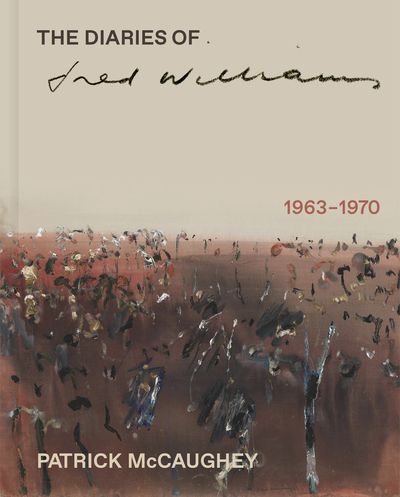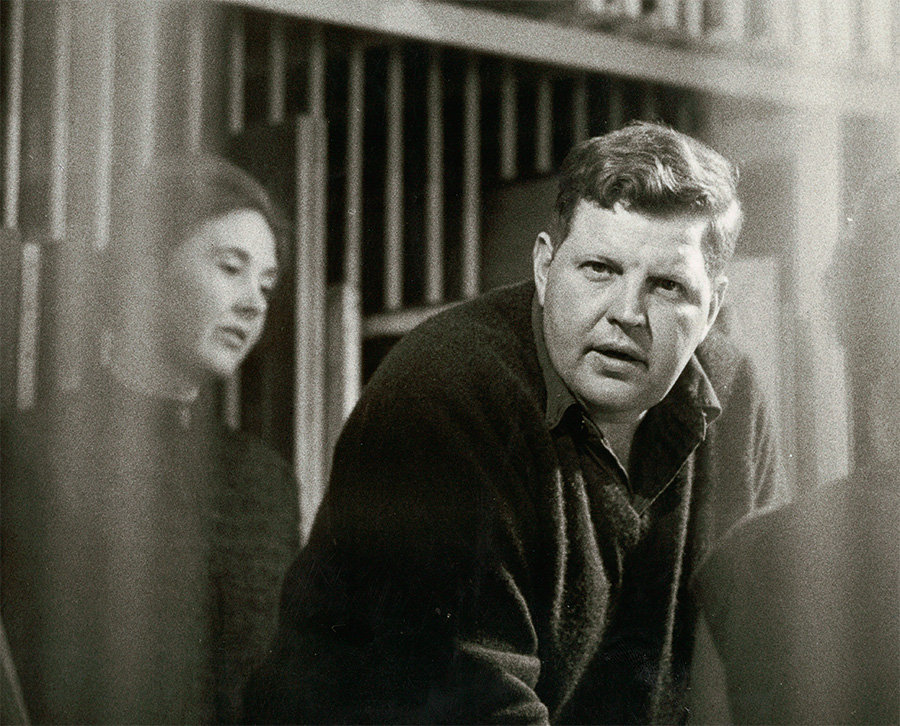
- Free Article: No
- Contents Category: Art
- Review Article: Yes
- Article Title: The painted word
- Article Subtitle: The logic of an artist’s life
- Online Only: No
- Custom Highlight Text:
The diaries of Fred Williams (1927-82) invite the inevitable, unfair, but instructive comparison with those of Donald Friend; unlike the latter, they are not a masterpiece of witty and incisive prose, filled with insightful and indiscreet comments about contemporaries, the life of the artist, and the social and cultural world of the author’s time. They are plainly written observations on the day-to-day life of a hard-working painter, with an emphasis on the practical; it would be wrong to describe them as modest or self-effacing, for manifestly they were not written with any thought of publication. Friend, steeped in the culture of past centuries, was well aware of composing a literary work like the great diarists of earlier generations; Williams was jotting down, especially at the outset, largely professional notes in a standard page-to-a-day business diary.
- Featured Image (400px * 250px):

- Alt Tag (Featured Image): Christopher Allen reviews ‘The Diaries of Fred Williams, 1963-1970’ edited by Patrick McCaughey with John Timlin
- Book 1 Title: The Diaries of Fred Williams, 1963-1970
- Book 1 Biblio: Miegunyah Press, $120 hb, 658 pp
- Book 1 Cover Small (400 x 600):

- Book 1 Cover (800 x 1200):

- Book 1 Readings Link: https://www.readings.com.au/product/9780522871203/the-diaries-of-fred-williams-1963-1970--patrick-mccaughey--2024--9780522871203#rac:jokjjzr6ly9m
In this selection, suavely edited by Patrick McCaughey, there are entries about ordering materials, the difficulty of resolving compositions, dealing with collectors, fellow artists, and especially with art dealers, preparing works for exhibition or publication. We learn much about Williams’s painting practice, including his habit of hanging pictures around the house to see them objectively, out of the studio, and leaving them to dry properly before returning to paint on them, or about his process in etching and editioning prints. But there are almost no general reflections about art or attempts to express his own aesthetic in words. In his remarks on the work of other artists, he is quite clear in his judgement as to whether an exhibition is successful or not, and yet there is seldom any discussion about choices of artistic style; his judgement is based on an intuitive sense of formal resolution and quality of execution.
In the age of what Tom Wolfe lampooned as ‘the painted word’, when the art world was ringing with the cacophony of vociferous and doctrinaire arguments about style, Williams stayed aloof from partisan debates, remaining friends with artists of different inspirations and rarely quarrelling with anyone. His own work was still based on a traditional practice of sketching in nature, and yet what he saw was transformed, by an imaginative alchemy that he perhaps wisely never sought to explain, into some of the most memorable images of the Australian landscape in his generation. He left it to others to reflect on the way his particular and even idiosyncratic style evoked the scattered sparseness, subtly bounded by the lines of roads and fences, of rural farmland and paddocks.
Technical matters thus take up much of his attention, but there are other concerns, especially about his career, his personal life, and his family. He is something of a hypochondriac, referring several times to ‘feeling his age’ when barely forty years old, complaining about sore legs and ankles, and, as an asthmatic, sometimes breathlessness or chest pains. Above all he is worried about his weight. Williams was very fat at a time when it was relatively rare to be overweight, and he knows he feels better when less heavy; he tries diets and fails to follow them until he is eventually hospitalised on his doctor’s orders and put on a draconian regime.
Meanwhile, he is establishing himself as an important artist: in 1964 he wins the Helena Rubinstein Travelling Scholarship and sets off for Europe again with his wife, Lyn; in 1966 he is awarded the Wynne Prize for landscape, which he notes was the only prize he really coveted; in 1967 he has a first sell-out exhibition. The family grows from one daughter at the beginning of the volume to three; we hear about pregnancies, births, and infancies. They move first to Upwey near Ferntree Gully in the Dandenong Ranges, and then later to the comfortable suburb of Hawthorn in Melbourne. As his earnings from exhibitions increase, they rent beach houses for family holidays in summer. His mother grows older and has a series of strokes and heart attacks, until, quite suddenly, she dies.
There is of course much too about his artist friends, who include, notably, John Brack and Clifton Pugh, but also Ian Armstrong, George Baldessin, Harry Rosengrave, Leonard French, and Jan Senbergs. There are endless openings and lunches and dinners, especially with Williams’s dealer Rudy Komon, who did so much to promote his career and was a legendary figure in Australian art in the 1960s and 1970s. A lot of food is eaten and a great deal of wine imbibed; everyone gets drunk – the diary is punctuated by complaints about monumental hangovers – and most of the men, except for Williams, seem to get into terrible quarrels at one point or another; occasionally they even attack Williams, but he seems not to take the bait.
Through all of this there is a deep pathos, as we watch what feels like a slow-motion film of people’s lives disintegrating, artists growing estranged from their wives and falling out with friends, dealers, or institutional employers. Gradually it becomes apparent, even through a text that is never self-aggrandising, that Williams is emerging as a leading artist of his time, while some of his friends are stalling or losing their way. This is particularly painful in the case of Armstrong, whose work seems to get more and more disoriented and unresolved. Another friend, Stacha Halpern, returns to Melbourne after some years in Paris, is unable to establish himself, and then unexpectedly dies; it is largely thanks to Williams’s efforts on his behalf that the National Gallery of Victoria holds a retrospective of his work in 1970.
 Lyn and Fred Williams, 1966 (photograph by Mark Strizic)
Lyn and Fred Williams, 1966 (photograph by Mark Strizic)
At the same time, almost imperceptibly, we feel Williams’s own confidence growing. He may still suffer from nerves before an exhibition, when he can doubt the quality and validity of everything he has done, but this seems to grow less pronounced within a few years. In discussing the work of other artists, institutions, and practical matters in the world, his tone is poised and decisive, yet never malicious. He is astonished and disapproving when a new generation of teachers takes over at the National Gallery School and decides to dispense with life drawing and the teaching of draughtsmanship, skills which he well understood to be foundations of his own work.
This book which its author never conceived as a book thus turns out, in spite of its considerable length, to be surprisingly hard to put down: Williams writes well and is articulate, even in casually composed notes, and the story unfolds with the organic logic of life itself, so that we find ourselves naturally wanting to know what happens tomorrow and the day after. It is beautifully produced, illustrated not only with some of the artist’s finest paintings and etchings, but with reproductions of many pages from the diaries, filled with thumbnail sketches of works in progress. The diary entries themselves are usefully annotated throughout, elucidating oblique remarks and identifying many otherwise forgotten people and events, and greatly enhancing the value of this book as an important document for the history of Australian art in the 1960s.


Comments powered by CComment